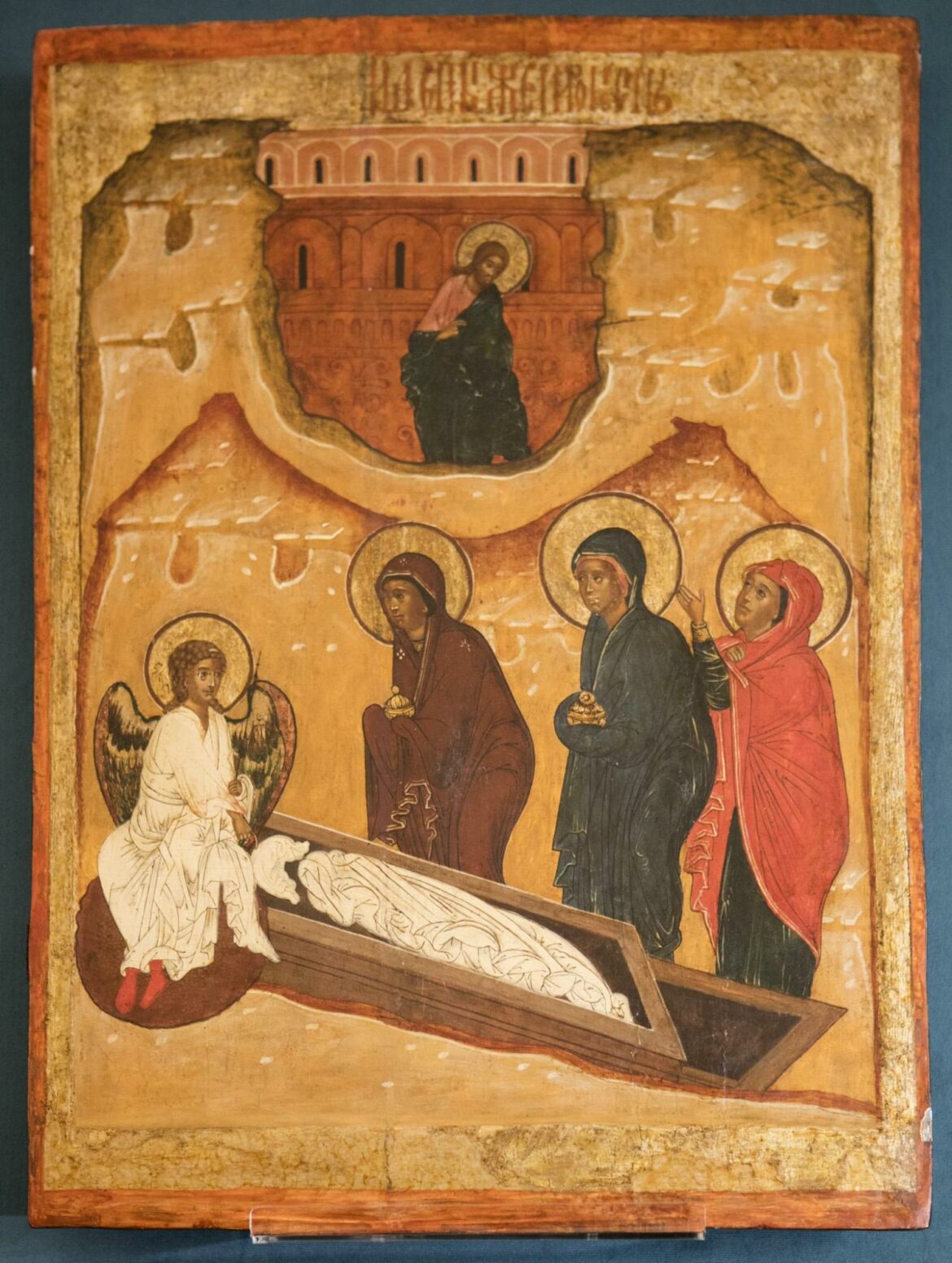On Good Friday, the “Three Marie at the tomb” icon returned to the Museum of Warmia and Masuria. The 16th-century icon was painted in the egg tempera technique on a board. It is the second of a collection of 29 icons stolen over 30 years ago from Olsztyn, which was recovered thanks to the cooperation of the Ministry of Culture and National Heritage (MKiDN) with the German partners.
The stolen icon was recognized in December 2021 by an employee of the then Department for the Restitution of Cultural Goods at the Ministry of Culture and National Heritage in the catalog of the completed auction of Russian and Greek icons in Düsseldorf, using the information system on the internal market of the European Union, the so-called the IMI system. The Ministry of Culture and National Heritage approached the Ministry of Culture and Science of North Rhine-Westphalia. The German side confirmed that it is a work of art sought by Poland, and the auction house from Düsseldorf expressed its readiness to return the object. At the same time, the Museum of Warmia and Mazury in Olsztyn verified the identity of the icon based on the documents and photographic materials.
Deputy Minister of Culture, General Conservator of Monuments, Dr Jarosław Sellin emphasized his joy, that on Good Friday, after more than 30 years, the beautiful icon “Three Marie at the tomb” has finally returned to its home museum. “There are still 27 icons from the collection stolen in December 1990 to be found. I assure you that the Ministry of Culture and National Heritage will make every effort to find and recover them, wrote, in a letter read during the transfer of the recovered painting to the museum’s collection”, says Sellin.
This is the second work of art that has recently returned to the Olsztyn Museum. The first icon recovered from the collection stolen in 1990 was a representation of Archangel Michael dating back to the 17th / 18th century, found in the summer of 2020 at the Icon Museum in Recklinghausen in North Rhine-Westphalia, Germany. The work was returned to the Museum of Warmia and Mazury in Olsztyn in December 2021.
Arkadiusz Słomczyński





